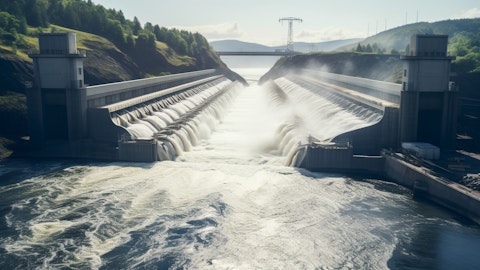One, under IRA today, the vast majority of IRA funds are going to Republican states. So while there may be changes to that bill under a different leadership, we wouldn’t expect it to change dramatically. And then the second thing to highlight is what’s fantastic about the current situation in the United States is we’ve seen what happens for renewables growth under both a Republican or a Democratic leadership in recent years. And even going back to when there was Republican leadership in the United States, that was one of the fastest growing periods for renewable power in that country. So I think that does reiterate that while government policy can have an effect on things, that trend line of corporate demand is going to set the pace and growth of this industry and government policy is simply going to put a little bit of ebb and flow around that trend line, it’s certainly not going to wildly change our approach to the market or our strategy.
David Quezada: That’s great color. Appreciate it. I’ll turn it over. Thank you.
Operator: Our next question comes from the line of Ben Pham with BMO.
Benjamin Pham: Hi, thank you. Good morning. I wanted to continue the topic of corporate M&A versus asset acquisitions. And I’m curious, when you think about corporate deals with Brookfield Renewable, historically, or even how you think about it going forward, what do you think the main benefits for you specifically on the corporate transaction, especially when you talk about maybe that long drawn off process with courtship?
Connor Teskey: Yeah, certainly. So, Ben, it’s a great question. And there’s two or three things I would highlight. In particular, it’s an environment where we can very much differentiate ourselves using our scale and operating capabilities. Those corporates are essentially picking a partner to help them transition to a new business model that is going to be more sustainable and more valuable for decades to come. They don’t want to pick a partner who isn’t very, very credible without best-in-class capabilities. So we do think it is an environment where we can do those types of deals on a bilateral basis and really be differentiated and therefore hopefully target some very attractive returns on our capital. The other thing that is important to highlight is not dissimilar to what we’ve seen in other call it power transformation or business transformation opportunities, there is an underappreciated benefit in some of those deals.
Those are often large and leading corporates in many of the markets that they operate in. And as a result, there’s often some very attractive embedded infrastructure within those businesses that we can utilize to make the invested capital in renewables build out or other transition initiatives, either more de-risked or done at higher returns. Because these businesses are often leading and have been built up over years and decades, the underlying infrastructure is sometimes an underappreciated benefit of some of those transactions.
Benjamin Pham: Interesting. Maybe my second and last one, the distribution of 5% quite solved in this environment. And I don’t make it seem like this question around is not — it wasn’t strong, but I’m curious more about 5%. How do you — how do we think about that relative year, your 10% growth rate plus and your guidance of 5% to 9%, how do you reconcile that?
Connor Teskey: Absolutely. So we remain very committed to increasing our distribution within that 5% to 9% annual increase range that we had in the market for years now. And our decision around where we set within that range is always dictated by where can we drive the best returns for our capital. And because we are simply seeing so much growth and have seen so much growth in our industry and in our sector and, quite frankly, within our company specifically, both our organic pipeline and our M&A pipeline, we have been at the low end of that range. And that’s simply because we are seeing such attractive opportunities to deploy that capital very accretively into growth. Obviously, we’re a long way away from making those decisions for years to come, but that trend has been quite consistent for a number of years now and no doubt played a big role in where we set the distribution increase this year.
Benjamin Pham: Okay. Understood. Thank you.
Operator: Our next question comes from the line of Joe Nussbaum with BNP Paribas.
Moses Sutton: Hi. You have Moses Sutton from BNP. How do you think about contracted versus spot power price going forward as the percent moves into the 80% and 70s? Would you see decreases or increases in realized price and how it hedges play a role?
Connor Teskey: Yeah, certainly. So our business is outside of some of the hydro facilities we own in North, in essentially the United States and Colombia, is essentially a 100% contracted business. And we continue to believe that the risk adjusted returns you can get by fully contracting out our wind and solar pipelines, all of our new developments, the attractive financing you can get against those contracts, and the stability it provides to our growth and our earnings is the most attractive thing we can do and therefore we remain committed to not building on SPAC, only building when we’ve secured that long-term contracted revenue off-take. But to your question, you know, our contract profile, I would say, almost always looks the way that it does today, a little bit higher in the near term, and then kind of fading down, call it 10 percentage points over the next five years.





